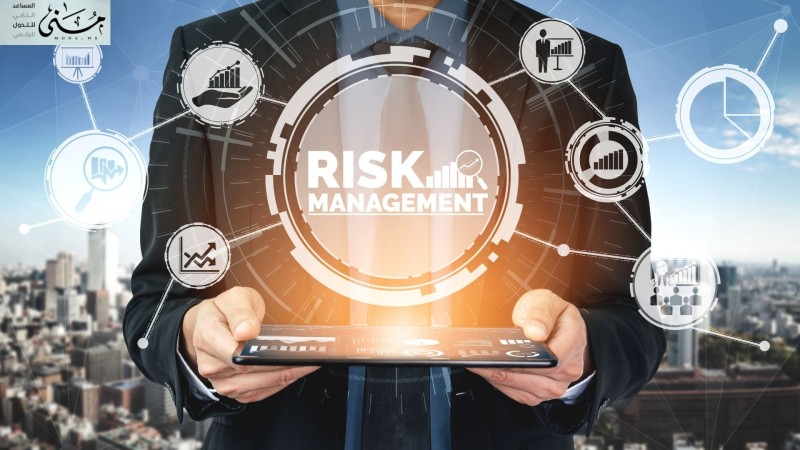At Mona News, we closely follow technological developments and provide analytical insights that shed light on the issues shaping our digital present and future. As reliance on technology continues to expand across all aspects of life—from communications and government services to banking transactions and remote work—information security threats have become a critical concern that affects individuals, institutions, and even nations.
Information is no longer just text or numbers stored in electronic systems; it has become a digital asset representing the backbone of every successful organization. Protecting this asset is now an existential necessity, no less important than safeguarding physical borders—especially in a world where cyberattacks are rapidly increasing and hacking techniques are evolving at unprecedented speed.
What Are the Key Characteristics of Information Security?
Information protection relies on three fundamental pillars known as the CIA Triad, which form the core of any successful security system and represent the essence of digital data protection in modern organizations.
1. Confidentiality — Information Is Not for Everyone
Confidentiality is the foundation of information security. It ensures that data is accessible only to those who are authorized to view it. Whether it’s a sensitive financial document or ordinary user data, information loses its value the moment unauthorized individuals gain access to it.
In today’s world, where systems and devices are constantly interconnected, simply owning a device or having login credentials is no longer enough. Organizations now require advanced layers of control to protect their data from leakage or misuse.
Access Control Systems
These systems act as the “security gate” that precisely determines who can view, modify, or delete specific types of data:
-
They rely on the principle of least privilege, ensuring users are granted only the access they need to perform their tasks.
-
Users are organized into roles and groups, with permissions based on job requirements—not individuals.
-
This minimizes unauthorized access, whether intentional or accidental.
Access control remains one of the most crucial tools for preventing internal misuse, which is one of the most common causes of data breaches worldwide.
Data Encryption — Protection Even Under Attack
Encryption transforms data into unreadable content unless the correct decryption key is provided. Even if attackers manage to breach a system, stolen data becomes useless.
Encryption protects:
-
Data in transit, such as messages, banking transactions, and correspondence.
-
Data at rest on devices, servers, and mobile phones.
-
Organizations from digital extortion, since encrypted data cannot be exploited.
For this reason, major companies and governments rely on advanced encryption algorithms to secure their most sensitive information.
Strong Password Policies & Multi-Factor Authentication (MFA)
Passwords alone are no longer sufficient. Modern hacking tools can crack millions of passwords in seconds.
Security is strengthened by:
-
Using strong, regularly updated passwords.
-
Enabling multi-factor authentication (SMS codes, biometrics, or security apps).
-
Monitoring unusual login attempts.
These added layers make unauthorized access nearly impossible, even if a password is compromised.
Why Is Confidentiality So Important?
Because data breaches today are among the most dangerous digital threats, leading to:
-
Loss of customer trust
-
Major financial damage
-
Severe reputational harm
-
Legal and regulatory consequences
Without confidentiality, no digital system—no matter how advanced—can be trusted.
2. Integrity — Information Must Remain Accurate and Untampered
Data integrity is another fundamental pillar of information security. It ensures that information remains accurate, complete, and unchanged unless authorized. No matter how well data is stored or encrypted, its value collapses if it is altered without permission.
In digital environments where decisions rely heavily on accurate information—financial, operational, or even medical—any unauthorized modification can have catastrophic consequences.
Why Is Data Integrity Critical?
Because compromised data can lead to:
-
Faulty decisions at the managerial and operational levels
-
Major financial losses due to internal manipulation or fraud
-
System failures caused by modified code or configuration files
-
Life-threatening risks in medical environments
Therefore, organizations implement multiple layers of protection to ensure data remains intact.
Digital Signatures
A digital signature verifies that a document has not been altered since it was created:
-
Any change, even a single character, invalidates the signature
-
It ensures authenticity for legal and financial documents
-
Used extensively in secure email, digital contracts, and e-invoices
Integrity Monitoring Systems (IDS)
These systems act as a silent guardian:
-
Detecting unauthorized changes in files or databases
-
Sending instant alerts when suspicious activity is found
-
Identifying attacks that rely on hidden modifications
They are widely used in banks, technology firms, and government entities.
Regular Backups — The Last Line of Defense
Even with strong protection, data may still be exposed to damage or ransomware attacks. Backup copies ensure:
-
Full data restoration
-
Business continuity after system failures
-
Multiple secure storage layers (on-site and off-site)
-
Protection against disasters such as fires or sudden breakdowns
Without backups, entire organizations could come to a halt within minutes.
3. Availability — Access to Information When Needed
Information without access is useless.
Availability ensures that systems remain functional and that data stays accessible at all times. It is essential in sectors such as healthcare, finance, and government services.
Availability is ensured through:
Redundant Systems (Redundancy)
Backup servers operate immediately when primary systems fail.
Protection Against DDoS Attacks
These cyberattacks attempt to shut down services by overwhelming systems with traffic.
Regular Maintenance and Security Updates
To prevent breakdowns and block newly discovered vulnerabilities.
Additional Characteristics That Strengthen Information Security
Beyond the CIA Triad, modern systems require additional pillars:
4. Non-Repudiation
Proof that a user performed a specific action, such as sending a message or signing a contract.
5. Accountability
Tracking and analyzing every action within the system to identify who did what and when.
6. Reliability
Ensuring systems function correctly and consistently without unexpected failures.
Why Are Information Security Characteristics More Important Than Ever?
Because:
-
Cybercrime is rising at an unprecedented rate
-
Businesses now rely entirely on digital systems
-
Data has become a strategic target for hackers and even governments
-
Digital trust is a critical factor for the success of online services
With the expansion of digital transformation across the Arab world—especially in Saudi Arabia—strengthening information security has become a necessity to protect platforms and ensure digital sustainability.
Conclusion: Information Security Is Not Just Technology… It Is a Culture
Data protection begins with people before systems. Even the strongest security measures can fail due to a single careless action.
Understanding and applying information security principles properly protects individuals and institutions from threats and helps build a stable and safe digital ecosystem—especially in an era where data has become the key to strength and progress.








Comments
Add New Comment